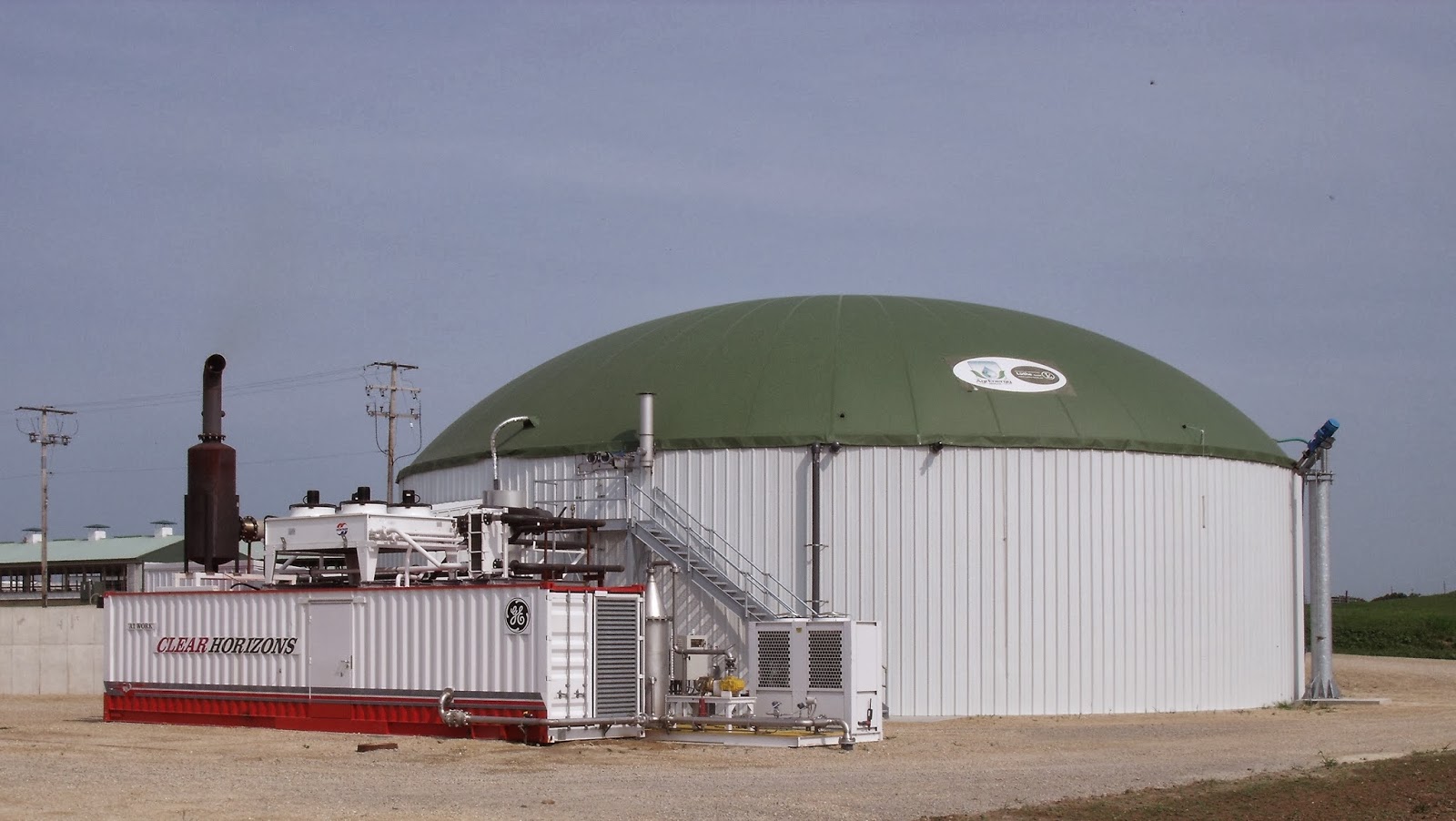
by Sam Dunaiski | Oct 18, 2022 | Advocacy, Biogas, Community, Geothermal, Local Government, Local Initiatives
County Executive Joe Parisi has issued his 2023 budget, which once again prioritizes environmental action and includes initiatives to implement the County’s robust Climate Action Plan. RENEW is asking Dane County advocates to write a letter to Dane County Board Members to support the proposed budget.
A major portion of the budget includes work to achieve its goal of 100% renewable energy for County facilities by the end of 2023. These items will significantly contribute to the ongoing effort to reduce emissions, help the County achieve carbon neutrality in its facilities and fleet by 2030, and cut countywide emissions in half. Included in the proposed budget:
- $4.5 million for the development and installation of carbon capture technologies at the RNG facility at the landfill
- $3 million for feasibility work and acquisition of a site to develop a commercial-scale manure treatment facility to capture manure from up to 30,000 cows in the north Mendota watershed reducing methane emissions comparable to removing 20,000 cars.
- Almost $900,000 to start work on campus-wide geothermal systems for the East District Campus (Medical Examiner and Highway Garage) along with the Badger Prairie campus in Verona.
- Almost $100,000 in additional resources for the Office of Energy & Climate Change and our efforts to accelerate countywide climate action
- $2 million for ongoing “Suck the Muck” efforts to remove phosphorous from our waterways
- $3 million plus new staff positions to continue sediment dredging that improves water flow between our lakes, reducing flooding risks exacerbated by climate change
- $2 million for the Dane County Continuous Cover Program, which funds private landowner efforts to convert marginal cropland to perennial cover, reducing runoff and sequestering carbon
- $10 million for the Dane County Conservation Fund to continue County land acquisitions that help improve water quality and allow opportunities for prairie and wildlife restoration
- $3 million for additional regional bike trails
RENEW Wisconsin is asking Dane County advocates and allies to support Executive Parisi’s budget approval with the County Board. Here’s how you can help:
- Write a letter in support of Executive Parisi’s proposed budget. Your letter can focus on any of the above bullet points and how these initiatives would improve the overall health, economy, and well-being of Dane County. Ask the Board of Supervisors to approve Executive Parisi’s 2023 budget.
- You can find contact information for Dane County Supervisors HERE.
Thank you for weighing in on this important issue!

by Sam Dunaiski | Aug 31, 2022 | Advocacy, Biogas, Electrification, Energy Storage, Geothermal, Hydroelectric, Renewables, Solar, Wind
The world of clean energy received a monumental win earlier this month with the passage of the Inflation Reduction Act. The Inflation Reduction Act (IRA) will be the backbone of the United States’ effort to decarbonize our energy sector, spur clean energy implementation across all demographics, and significantly grow the clean energy economy.
Here is a breakdown of the bill’s elements:
Renewable Energy Generation
Investment Tax Credits
- Residential Solar: 30% Investment Tax Credit (ITC) on project costs until the end of 2032, with a step-down of 26% in 2033 and 22% in 2034. Credits are retroactive for residential installations from 1/1/2022, meaning that homeowners who installed a solar array at any point in 2022 will qualify for the 30% ITC.
- Commercial Solar: 30% ITC on project costs until the end of 2024 (ITC on commercial solar is also retroactive to 1/1/2022). Beginning in 2025, the ITC will be replaced by technology-neutral credits, with the following rules in place:
- 6% base credit; bonus credits up to 30% of costs if the project meets union labor, prevailing wage, and apprenticeship requirements. These requirements do not apply to projects less than 1 megawatt (MW) in size.
- 10% bonus credits if the project meets domestic content requirements.
- 10% bonus credits if the project is sited in an “energy community” – a brownfield site or a community with a recent coal plant closure.
- 10% bonus credits if the project is sited in a low-income community. This only applies to projects that are 5 MW and less.
- 20% bonus credits if the project qualifies as directly serving a low-income residential facility or another economic benefit system.
- Interconnection costs -for projects less than 5 MW- with the utility can be included in the credits.
Production Tax Credits
While the Investment Tax Credit applies to the upfront purchase of parts, materials, and labor, the Production Tax Credit (PTC) functions differently. This credit is a direct payment and applies to the production or output of the generation source. This generation source can be solar, wind, geothermal, biomass, and hydropower, to name a few. These credits are also retroactive from 1/1/2022.
Here is how the PTC breaks down:
- Direct pay value: $0.026 per kilowatt-hour (kWh) starting in 2022; rate rises with inflation.
- Bonus credit of 1.5 cents/kWh if union labor, prevailing wage, and apprenticeship requirements are met.
- 10% bonus credits if domestic content requirements are met.
- 10% bonus credits if the project is sited in an “energy community” – a brownfield site or a community with a recent coal plant closure.
- The PTC is available for nonprofits, state and local governments, rural electric cooperatives, tribal governments, and/or other tax-exempt entities. These organizations previously did not qualify for the ITC.
- PTC will also apply to utility-scale projects.
- Credits are available for ten years after the project is placed into service.
- Direct pay/PTC is not available for residential solar installations.
- PTC is transferable after 2022; however not for individual taxpayers.
- Commercial solar projects can choose either the ITC or the PTC.
Electric Vehicles
New EVs: (Effective 8/16/2022)
- $7,500 tax credit to be divided into two separate credits:
- $3,750 credit for electric vehicles with batteries produced in North America.
- $3,750 credit for electric vehicles using a certain percentage of critical battery minerals extracted or processed in the U.S.
- Vehicles meeting only one requirement will only be eligible for a $3,750 credit.
- Vehicles must cost less than:
- Vans < $80,000
- Pickups and SUVs < $80,000
- Cars < $55,000
- Income requirements:
- Joint tax return < $300,000
- Head of household < $225,000
- Single-payer < $150,000
- Credit will eliminate the limit of 200,000 vehicles per manufacturer.
Commercial Clean Vehicles: (Effective 01/01/23)
- Up to $40,000 tax credit for commercial electric vehicles.
Used EVs: (Effective 01/01/2023)
- $4,000 tax credit or 30% of the vehicle’s sale price.
- The vehicle’s model year must be at least two years older than the current “new” model year.
- Vehicle cost must be less than $25,000.
- Income requirements:
- Joint tax return <$150,000
- Head of household <$112,300
- Single-payer <$75,000
- Used EV tax credits will continue until the end of 2032.
EV-Charging:
- Credits for EV-charging equipment and infrastructure will increase up to $100,000.
- Equipment must be located in a qualified census tract, with similar bonus credits if prevailing wage and apprenticeship requirements are met.
- A direct pay or PTC option is available for charging with transferrable credits.
- Credits will be available until 2032.
Battery Storage
Effective as of 1/1/2023
- 30% ITC for the cost of installation; credits last until 2033. To qualify, batteries must be larger than 3kWh for residential installations and larger than 5kWh for commercial installations.
- Commercial battery credits have similar sliding scales as other ITC items: baseline of 6% with increasing credits for prevailing wage, labor, location, etc.
- Battery storage systems will no longer need to be coupled with solar generation systems to qualify for tax credits.
Energy Efficiency and Electrification
Effective as of 1/1/2023
Federal Tax Credit
- Heat Pumps: 30% of costs, up to $2,000
- Electric Upgrades: 50% of costs, up to $1,200/year
Upfront Discounts
- Incentive levels and eligibility are determined by income
- Heat Pumps: rebates for up to $8,000
- Electric Upgrades: up to $4,000 for breaker boxes/electric service; $2,500 for wiring, and $1,600 for insulation/venting/sealing
Manufacturing and Production
Effective as of 1/1/2023
- $30 billion in PTC to manufacture solar panels, trackers, inverters, wind turbines, batteries, and other critical minerals.
- Solar PV cells – $0.04/watt
- Solar-grade polysilicon – $3/kg
- Solar modules – $0.07/watt
- Wind components – 10% of the sales price
- Battery cells – $35/kWh
- Critical minerals – 10% of the cost of production
- $10 billion in ITC funding for building new facilities to manufacture clean energy products; $4 billion of these funds must be allocated to “energy communities.”
- $500M for manufacturing heat pumps and processing of critical minerals necessary for heat pump production.
Other Items
- Carbon Sequestration Credits (ITC or PTC) for facilities that begin construction before 2033 and provide direct air capture of carbon dioxide. Credits will be issued by a metric ton of carbon capture.
- Clean Hydrogen – credits for production -by unit- of green and blue hydrogen that can be used to offset traditionally carbon-based fuels.
- Sustainable Aviation Fuel – credits for SAF produced by unit (gallon) with increasing credits based on a percentage of greenhouse gas reduction.
- Biodiesel/Alternative Fuels – production credits for fuels produced based on life-cycle emission levels.
- Methane Fees – fees imposed by EPA for facilities that emit more than 25,000 metric tons of CO2 annually.
Additional Provisions
- $500 million for the Defense Production Act, some of which could be used for solar manufacturing.
- Greenhouse Gas Reduction Fund totaling $29 billion overseen by the Environmental Protection Agency.
- Climate Pollution Reduction Grants to state and local governments totaling $5 billion.
- Environmental and Climate Justice Block Grants: $3 billion for disadvantaged communities.
- $2 billion in loan authority for new transmission construction in designated national interest corridors.
- $760 million for the Department of Energy to issue grants to state, local or tribal entities to facilitate siting of high-voltage interstate transmission.
- Additional $1 billion for rural renewable energy electrification loans and expansion of the program to include storage.
- Additional $1 billion for Rural Energy for America Program (REAP), with total grants limited to 50% of the total cost of an eligible project.
- $9.6 billion for loans and financing for rural co-ops to purchase renewable energy, generation, zero-emission systems, and related transmission, limited to 25% of total cost.
- Incentives for build-out of electric vehicle charging networks.
- Extension, expansion, and changes to electric vehicle tax credits, including a new credit for purchasing used EVs.
Conclusion
Much of the implementation and administration of the Inflation Reduction Act is still not understood. This document is meant to summarize the items in the bill that RENEW Wisconsin considers particularly important to the clean energy transition in our state.
For additional information, please utilize the following resources:
Please contact Sam Dunaiski (sam@renewwisconsin.org) with questions.
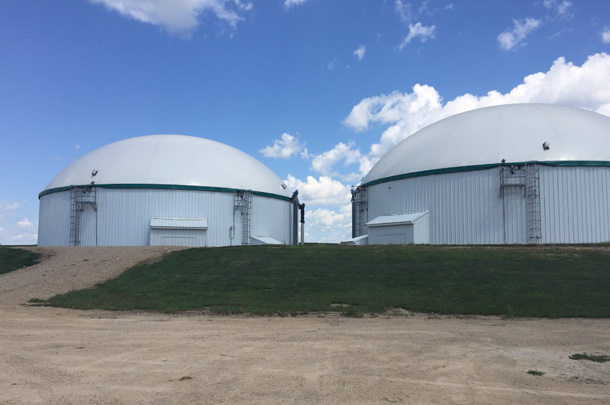
by Guest Blog | Apr 13, 2022 | Biogas, Renewables, Sustainability
Digestion of manure is, on paper, a relatively simple process. Similar to how a cow digests food, digesters further break down manure, capture methane, purify the gas and then convert it to pipeline-grade renewable natural gas (RNG).
Investors of all backgrounds have been touring dairy farms in the U.S. about RNG projects. I’ve heard stories with comments being made such as, “all your nutrient challenges will be gone,” to “we’ll pay you big money for your manure,” to “let’s be in partnership in this project.”
As a former owner of digester facilities, I can tell you that each project is a unicorn. How you bed your cows, frequency, method of manure spreading, and other aspects are just the tip of the iceberg of how farm practices impact the financial outcome of RNG projects.
Incorrect assumptions of owners/investors:
- The stuff coming out the back end is worth money
- Operations and management can be done with a few people
- It’s predictable
- This is a pot of gold at the end of a rainbow
Let’s dig a little deeper into each of these points.
The stuff coming out the back end is worth money.
The effluent does have nutrient value, and it is carbon-based. If separated, the liquid is easy enough to apply. The solids are commonly used as animal bedding, the base for compost, or spread on fields. Additional cost factors come in with the solid not being an easy form to spread on fields. Also, a watershed may require the removal of solids, which can be an added cost for transportation and negatively impact the project’s carbon intensity (CI) score.
Operations and management can be done with a few people
These facilities require people with specific knowledge. At first glance, the facilities are comprised of pipes, pumps, and poop. But there are by-products generated from manure –hydrogen sulfide and ammonia. Those two gasses deliver quite a punch to the equipment.
It is predictable
The aforementioned hydrogen sulfide and ammonia will humble even the best maintenance plan. Additionally, if manure is piped underground, it will require regular jetting due to buildup.
This is a pot of gold at the end of a rainbow.
RNG projects can be attractive financially, thanks to the Low Carbon Fuel Standard (LCFS) in California and Renewable Identification Numbers (RINs) at the federal level. Many factors can influence the actual income, primarily based on the CI score of a project, as mentioned earlier with farming practices and trucking costs. Historically, costs for maintenance have been underestimated. Equipment will break, and spare parts will be needed to keep projects running smoothly. Remember, if you’re not producing gas, you’re not making money.
Most large farming operations have already or are actively considering a biogas facility. The larger the number of cows, the better a project will pencil out. There are still plenty of opportunities for medium to smaller size farms to create a cluster project. These will depend on proximity to a pipeline.
Being mindful of these common misconceptions will put your team on the right track to a successful project. A legislative effort is underway for Wisconsin farm operations to increase access to the pipeline, therefore making projects more accessible. Click here to learn more about this.

Jessica Niekrasz
Principal
Clean Fuel Connects
Email Jessica Niekrasz
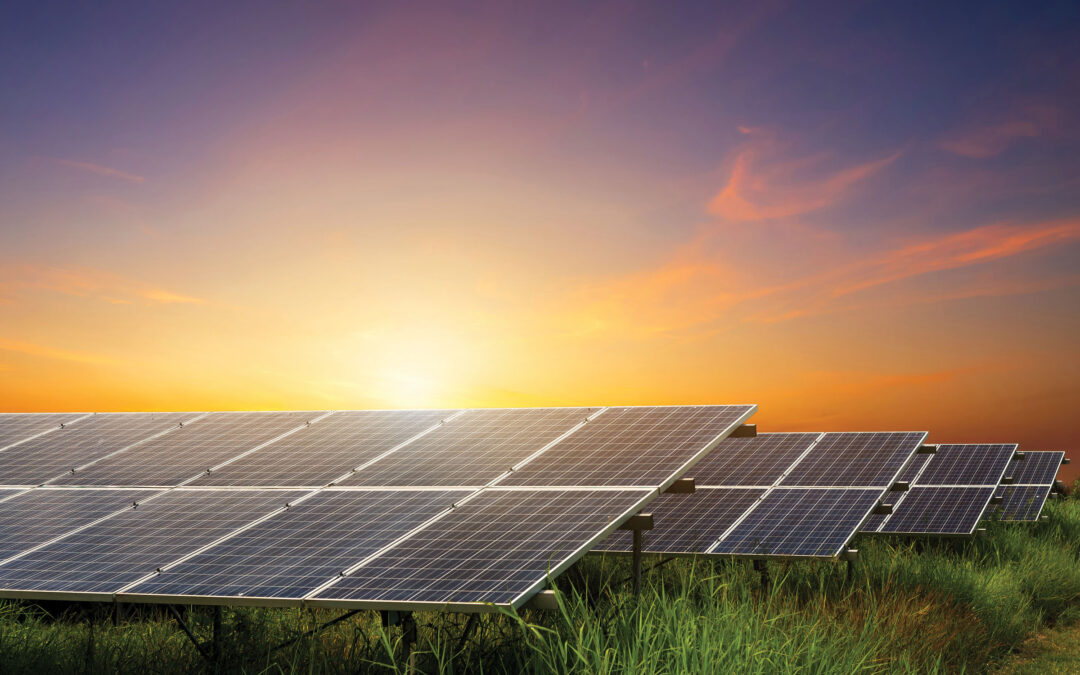
by Michael Vickerman | Jul 19, 2021 | Biogas, Policy, Programs, Renewables, Solar, Utilities, Wind
Wisconsin electric providers added significantly more renewable energy content to their electricity supplies in 2020 relative to 2019, according to a July 2021 report issued by the Public Service Commission. The annual report documents the amount of renewable electricity sold in Wisconsin and determines whether electric providers here comply with the State’s 15-year-old Renewable Portfolio Standard (RPS). This year’s report can be accessed from the PSC’s website at Docket No. 5-RF-2020.
Overall, RPS-eligible renewable energy (or renewable energy that supplies all utility customers) accounted for 12.98% of Wisconsin electricity sales in 2020, increasing more than two percentage points from the 10.71% level recorded in 2019.
This was the most significant advance since 2013 when the State’s electric providers achieved full compliance with the RPS statewide goal of 10% renewable electricity.
As shown in the chart below, the jump in Wisconsin’s renewable energy percentage resulted from a combination of increased renewable electricity supplies and a reduction in electricity sales caused primarily by the coronavirus pandemic.
In late 2020, Wisconsin utilities placed two significant renewable electricity sources in service: the Two Creeks solar farm near the Point Beach Nuclear Plant and the Kossuth wind power plant in north-central Iowa.
| Project |
Resource |
Capacity
(in MW) |
Location |
Utility owner(s) |
| Two Creeks |
Solar |
150 |
Manitowoc County (WI) |
WPS, MGE |
| Kossuth |
Wind |
150 |
Kossuth County (IA) |
Alliant-WPL |
More wind generation imported
Wind power now accounts for 71% of the renewable electricity sold in Wisconsin, and approximately 75% of Wisconsin’s wind generation originates from out of state. Overall, out-of-state sources produced 60% of Wisconsin’s RPS-eligible electricity in 2020.
While Wisconsin-based solar power is growing, it still represents a small sliver of the renewable energy pie. However, by the end of 2022, in-state solar generating capacity should surpass in-state wind capacity, as the ongoing utility effort to replace older fossil plants with new renewable generation shifts into high gear.
The pattern of adding in-state solar and out-of-state wind continues to unfold this year. Wisconsin utilities will have energized two solar farms by year’s end: the 150 MW Badger Hollow 1 project in Iowa County and the 100 MW Point Beach installation, adjoining Two Creeks. In January, a South Dakota wind farm called Tatanka Ridge began generating electricity. Dairyland Power Cooperative purchases electricity from a 51 MW share of that project.
Uneven distribution of renewable content
As shown in the table below, the distribution of RPS-eligible electricity varies widely from one electric provider to another. For example, Xcel Energy, whose territory covers much of Minnesota as well as western Wisconsin, has greatly expanded its renewable energy portfolio over the last three years, relying principally on wind power located west of the Mississippi River. As of today, one-third of Xcel’s electricity supply is renewably powered.
At the other end of the spectrum, the two WEC Energy utilities—Wisconsin Public Service (WPS) and Wisconsin Electric Power (We Energies)—remain stuck in the 5-7% range. That said, RENEW expects WPS’s renewable energy percentage to move higher in 2021, lifted by a full year of production from Two Creeks and five months of production from Badger Hollow 1.
The role of Wisconsin’s RPS – then and now
Today’s electric power industry is in a much different place than where it was in 2006 when the current RPS was adopted. Back then, renewable electricity was in its infancy, both in terms of cost and engineering performance. The purpose of an RPS, as conceived by clean energy advocates and sympathetic legislators, was to was kick-start utility deployment of renewable power sources, aimed at advancing several public policy objectives, among them resource diversity and cleaner air. Upwards of 10 wind power projects presently operating in Wisconsin and the region owe their existence to the RPS.
However, the RPS’s days as a mechanism for fueling new renewable power generation are long past. This year’s crop of solar farms and other renewable projects are the products of market forces and individual utility decarbonization plans, not the RPS. But it remains valuable as a publicly accessible information portal for tracking renewable power supplies flowing through the utilities’ bloodstream. Until the day the state legislature establishes a program for reducing carbon emissions economywide, complete with new metrics and indicators, we will continue to rely on these annual reports to find out how much progress Wisconsin electricity providers are making in their quest to decarbonize their power plants.

by Guest Blog | May 4, 2020 | Biogas, Electric Vehicles, Renewables, Solar, Wind
Review by Don Wichert
Michael’s Moore’s film, Planet of the Humans directed by Jeff Gibbs, is a poorly researched and conspicuously one-sided example of advocacy journalism. The film’s release on YouTube coincided with the 50th anniversary of Earth Day, prompting a well-deserved panning from many writers and reviewers with deep roots in the environmental and clean energy community.
The major shift from a world dominated by fossil fuels to one run by renewable energy is a monumental shift that cannot be made over night. Gibbs narrates a description focusing almost entirely on the slowness of this shift and on the inevitable failures of various attempts to move towards a more sustainable world. Much like evolution itself, some mutations towards this goal succeed and others don’t. It’s called “learning by doing”. Unfortunately Gibbs only describes those early experiments gone badly or interviews people who are not qualified to explain the goals and the process of development that is being considered.
Much of the reporting is one sided, not researched very well, outdated, and inaccurate and is simply inexcusable. Some examples:
- Interviews with GM officials in 2010 when the Chevy Volt was introduced. The Volt has gotten great reviews over time as a first generation Electric Vehicle that also has a gas engine. However, since it is typically recharged from the electric grid, which at the time was powered primarily by coal from the Lansing based utility in 2010; it’s portrayed as a phony sustainable alternative. No mention was made of electric cars being 85% energy efficient vs. internal engines being 15% efficient (of energy in the fuel to the wheels on the road). Since 2010, about 100,000 megawatts of coal plants have been shut down and replaced by renewable energy or natural gas. So, the grid has become greener, and therefore driving an electric vehicle has become greener over time.
- In the same ten year old footage, Gibbs interviews a Lansing Power and Light official who explains how their experimental solar electric system works. The panels are low efficiency (about 8%) and the official estimates that the football sized solar field can produce the equivalent of eleven household’s annual electricity usage. In the last ten years, solar has become more efficient and the costs have dropped dramatically. Solar is now the among the most affordable ways to generate electricity in most places in the US and the world. This is not mentioned, nor is distributed solar electric power mentioned, which uses the solar energy produced and used at the site.
- Gibbs spends a lot of time interviewing Ozzi Zehmer, author of the “Green Illusion”. Zehmer makes the outrageous claim that silicon solar cells have no silicon and instead are made of quartz, coal, and rare earth metals. It is true that some carbon is added to the solar cells in the production process, but it is subterfuge to imply that more fossil fuels are used in the process then the carbon saved by the cells over their lifetime. Many studies have shown a payback on carbon from solar cells of about two years. However, there is concern that some rare earth metals will not be enough to meet an exponential demand in the future from solar panel and other electronics. Innovation in the future may be able to resolve this apparent rare earth emerging problem.
- Gibbs interviews a “solar salesman” at a trade show who said the lifetime of solar cells is “about 10 years.” However, every solar cell manufacturer offers a 25-year guarantee on their cells to produce at least 80% of the power by year 25. Although there is output degradation of about 0.5 percent per year, it likely that solar cells will be producing power many decades past their 25 year warrantees.
- The movie then shifts to wind power and singles out one potential site on the Lowell mountain in Vermont. Gibbs interviews the group of hikers that are opposed to the 21 turbine ridgeline project because it will destroy the vista and hiking that has been there before. He does not mention the environmental review that was done for the project nor that the project was approved by a 342 to 114 vote in the local town in 2009. He does not interview anyone in the area that was in favor of the project, or mention the actual impact on hunting, hiking, sound, the fossil power that it’s replacing (or other conservation measures), or the economic impact of the project. Nope, just those against the project. Gibbs also interviews others at wind construction sites, who described the amount of concrete, steel, and weight of the wind turbine projects, as if all construction of anything was bad. Does he oppose a bridge over a creek because some steel and concrete is being used?
- Gibbs also takes a slap at hydrogen used as a fuel source for autos. Even though hydrogen is not really being considered as a near-term replacement, he gets a response from a person at a trade show that the hydrogen fuel comes from fossil fuels. He does not mention that hydrogen can be made by using electrolysis of water powered by surplus renewable energy when supply exceeds demand or that the only emissions of hydrogen combustion is water.
- The film also makes short shrift of battery technology, even though battery storage is likely to become a game changer for scaling up renewable energy. Humans are on the very beginning of a tidal wave of innovation and discovery with battery storage, with new concepts and options to store more with less weight, occurring at a rapidly increasing rate.
- Gibbs and Zehmer then go to the southwest deserts where some large scale solar thermal to electricity systems were deployed. They visit the original site of the Solar Energy Generation System I (SEGS-I), built in 1986, 34 years ago. Out of the nine systems SEGS built over this time period they focused only on the first one, where it was dismantled and apparently is being repurposed to a newer system. No attempt was made to interview the owners of the system or to show the other eight systems that are merrily producing power at one of the sunniest sites in the US. Gibbs did show some footage of yucca plants and Joshua trees being cut down for the solar array construction. No energy system is completely benign, and tradeoffs are always made. The world is a lot different than it was before the advent of farming or the industrial revolution, and ethical choices of land use can always be challenged. Manhattan, Chicago, and Madison do not look like they did 300 years ago. The projects need to file environmental impact studies before they are built, but none of that is described.
- There are criticisms of the solar power towers near Barstow, CA. I never liked this concept either: large, moving parts, low thermal efficiencies, and the need for maintenance. However, it is an example of how major infrastructures shifts occur: start out with what you know (large, thermal power plants) with those who build them (Bechtel, Westinghouse) and see what happens. These plants were started in the 1980’s, and in this case, their failures will hopefully lead to learning.
- Gibbs also attacks environmentalists for taking funding from fossil fuel interest groups like the Koch brothers and others. The optics don’t look good, but most large corporations, energy or others, have a diversified portfolio of projects with new and old technologies. Sometimes old money is a major contributor to a better world in the future like the Carnegie libraries or the Rockefeller Foundations. Gibbs targets the Green Century Fund and cherry picks several companies that have a dirty image, but fails to highlight which part of these companies are being supported in the fund.
- The film charges that any business that claims to be 100% renewably powered while remaining connected to the utility grid is engaging in deception. In point of fact, it is possible to be 100 percent renewably powered and still use some power from the grid when needed, so long as the customer offsets its draw from the grid with an equivalent amount of excess renewable energy. Until batteries are more developed, having backup sources of power, whether from the grid or other means, makes total sense. There is a picture of Tesla’s mega battery plant before the roof was covered with solar electric panels, implying that Elon Musk was lying when he said the plant would be 100 percent renewable since it would still be connected to the grid. They also showed some diesel generators being used for back-up power at an Earth Day concert.
- But Gibbs biggest gripe is with bioenergy. He never explores the major renewable premise that biomass is recent solar energy stored in plants, or that most of the biomass feedstock is from wastes that would otherwise oxidize and slowly release methane and carbon dioxide in the process. He shows the McNeil wood-fired power plant in Burlington (VT), with piles of trees and wood chips outside ready to be burned. He never explores that 95 percent of this feedstock comes from timber product residues, culls left over after other logging operations, land clearing for development, tree trimming for power lines, forest thinning, or even dedicated biomass farms for fuel. He did not interview the fuel procurement personnel or say anything about the environmental scrutiny that is required in the fuel procurement process or anything about the sustainable guidelines that must be followed.
- He also makes light of a biogas digester at a zoo that takes elephant manure to produce energy. He does not explore the concept of modern biogas digesters and how they take raw manure from large animal operations, or landfill and wastewater treatment gas and make electricity and pipeline quality gas. Nor does he say anything about the reduction in pathogens and smell from these operations and the production of biosolid fertilizers.
- The film interviews a number of people living near solid waste incinerators as part of the biomass-to-energy portfolio of bad projects. It’s true that the track record of waste-to-energy plants has been spotty at best, but this is another example where projects started in the 1980’s to hedge against the energy crisis are now no longer being built. Mistakes were made, and from them, other ways to tackle problems emerge. Figuring out how best to recycle tires, hazardous wastes, and plastics is still a major problem to be solved.
There certainly are legitimate arguments being made that we humans are having a deleterious impact on the planet: over fishing of the oceans, acidification of the oceans destroying reefs, climate change impacts of more intense and frequent storms and droughts and ecosystem shifts, ground water depletion, plastic pollution, and too many people wanting too much stuff. But in Gibbs and Moore’s eyes, the glass is not half empty, but is almost dry. He completely ignores any discussion by the vast army of individuals, governments, and companies trying to fill the glass back up with clean water. No, everything anybody does is bad and evil according to the film. That includes Al Gore, Bill McKibben (founder of 350.org), Michael Brune (ED of Sierra Club), Michael Bloomberg, whose philanthropy underwrites Sierra Club’s Beyond Coal Campaign, and Dennis Hayes, coordinator of the first Earth Day in 1970. According to Gibbs, all environmental leaders are phonies and have sold out for themselves and their imperfect goals.
Renewable energy is still at an early stage of development and huge progress is being made at an accelerating pace. The first auto was made in 1885 and every year new innovations are being made. It’s almost impossible to conceive what we humans will be using for energy in the years ahead, but progress is being made every day.
The beginning of the film asks about 10 people off the street how long they think humans will survive. Guesses range from about 10 years to infinity. So there are a lot of opinions, some positive and some negative. Unfortunately, this film is all negative. It was probably meant to sound like a canary call in a coal mine, but it was way too one-sidedly negative. Things may be bad, but looking over human history, as Dr. Pangloss said in Voltaire’s Candide, “it’s the best of all possible worlds.” Too bad Moore and Gibbs didn’t do a better job researching to provide a balanced and more positive perspective on getting to the best of all possible worlds.
I cringe thinking of how right-wing media will use this film to cast doubt on the value of renewable energy and the purposeful goals of those involved in trying to make a more sustainable human earth.
Don Wichert is a self-proclaimed “Energy Geek”, with college degrees in Geography, Thermal Engineering, and Energy Analysis & Policy. He worked at the Wisconsin Energy Office for 23 years as Chief of the Energy Resources Section, was Director of the Focus on Energy Renewable Energy Program for six years, and interim Director of RENEW Wisconsin, a group he founded in 1989, for 16 months. He has served on a number of national nonprofit boards, including the Interstate Renewable Energy Council, the Clean Energy States Alliance, and the Biomass Energy Research Center. He lives in Madison, WI.
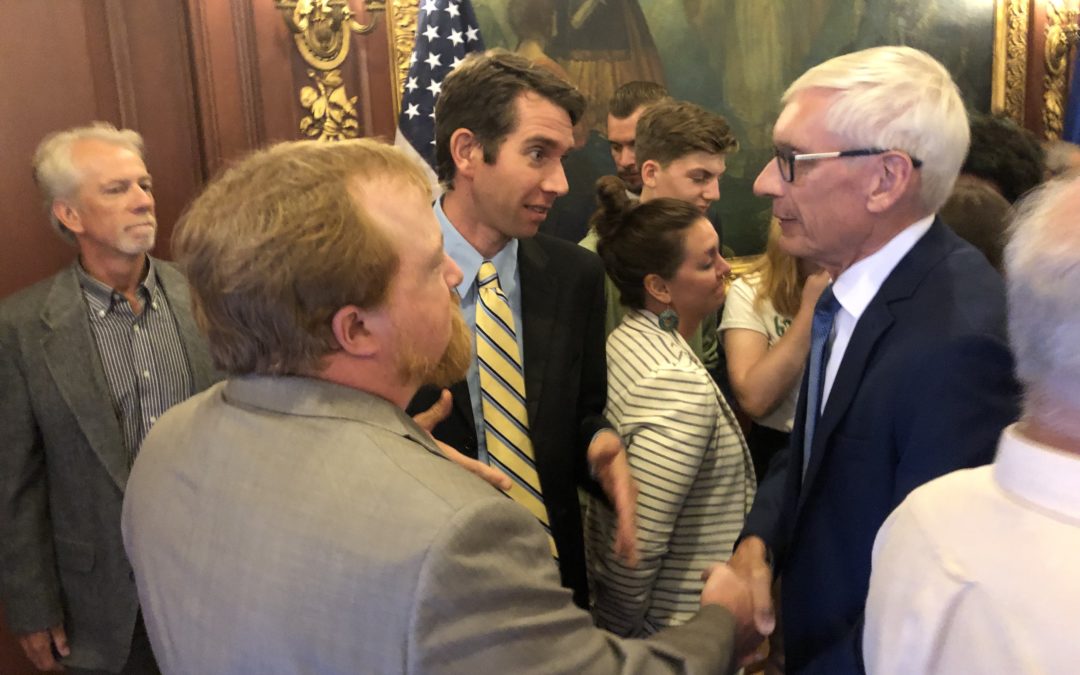
by Michael Vickerman | Sep 23, 2019 | Advocacy, Biogas, Community, Jobs, Public Service Commission, RENEW Wisconsin, Renewables, Solar, Solar for Good, Utilities, Wind
Last month, Governor Tony Evers delivered an ambitious clean energy vision for Wisconsin, which the editors of the Wisconsin State Journal aptly summarized: “Goal: Carbon-free by 2050.”
Executive Order #38 creates the state’s Office of Sustainability and Clean Energy, and directs the new office to “achieve a goal of ensuring all electricity consumed within the State of Wisconsin is 100 percent carbon-free by 2050.” This office will take the lead in planning and coordinating the Evers Administration’s efforts to greatly increase its own reliance on carbon-free electricity, and develop strategies for expanding clean energy throughout the state. The administration envisions accomplishing these goals through a partnership with other state agencies and state electric utilities.
To demonstrate that this initiative will very much be a team effort, Governor Evers was joined by Lt. Gov. Mandela Barnes, Public Service Commission Chairperson Becky Cameron Valcq and Department of Natural Resources Secretary-designee Preston Cole.
With this order, clean energy becomes again a policy priority, advanced to not only bolster the state’s economy and protect its natural resources, but also promote the health and well-being of its citizenry. What’s also notable about Evers’ initiative is the degree to which it is grounded in climate science. The order frames climate change as an escalating environmental problem that is already doing harm to the state on several fronts. An effective response from state government, therefore, demands aggressive and sustained action. Moving to carbon-free electricity by 2050 certainly qualifies on that score.
Now, an executive order is not the same thing as a law. Executive orders carry no legal weight, which explains why they are narrowly drawn to address matters that are totally within a governor’s control, such as agency priorities. Moreover, they are not binding on future governors and their administrations. That said, we are hopeful that the clean energy actions taken today by this Administration will cultivate, over time, buy-in from state legislators, and that from this order will emerge comprehensive, forward-looking policies that will put Wisconsin on track to becoming a renewable energy leader.
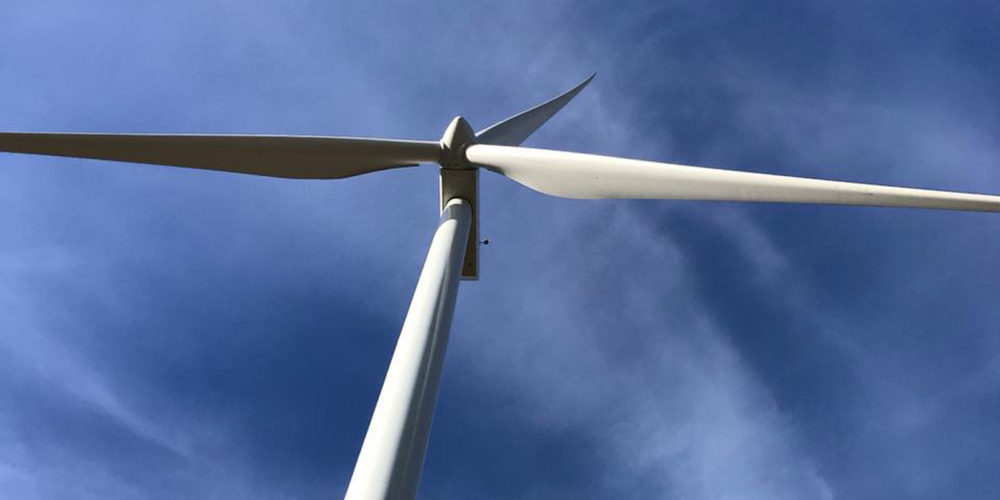
Wisconsin utility commitments set the stage
As audacious as it may appear, Evers’ clean energy goal is actually in line with recent utility commitments to decarbonizing their generation mix. Whether set at 80% or at 100% by 2050, the level of carbon reductions that Wisconsin electric providers have publicly embraced are ambitious, when compared with current levels. In 2018, the percentage of renewable and nuclear generation combined, relative to total sales, was approximately 25%. We’ll probably need to quadruple today’s volume of carbon-free electricity, depending on how much energy efficiency reduces our consumption compared with how much transportation and other direct uses of fossil fuels become electrified by 2050. No matter what happens, this transition will require a concerted and sustained push on the part of every electric provider.
Fortunately for the state’s utilities, there has never been a more propitious time to invest in carbon-free electricity, especially from wind and solar plants, than right now. The capital costs of new wind and solar farms are at their all-time lows, and their operating costs are a fraction of what it costs to buy the fuel for coal and natural gas plants operating today.
The signs that utilities are seizing this opportunity are multiplying. As they move to permanently shutter older and less efficient coal- and natural gas-fired generators, Wisconsin power providers are either busy purchasing more renewable electricity from new plants or building more solar and wind farms for themselves.
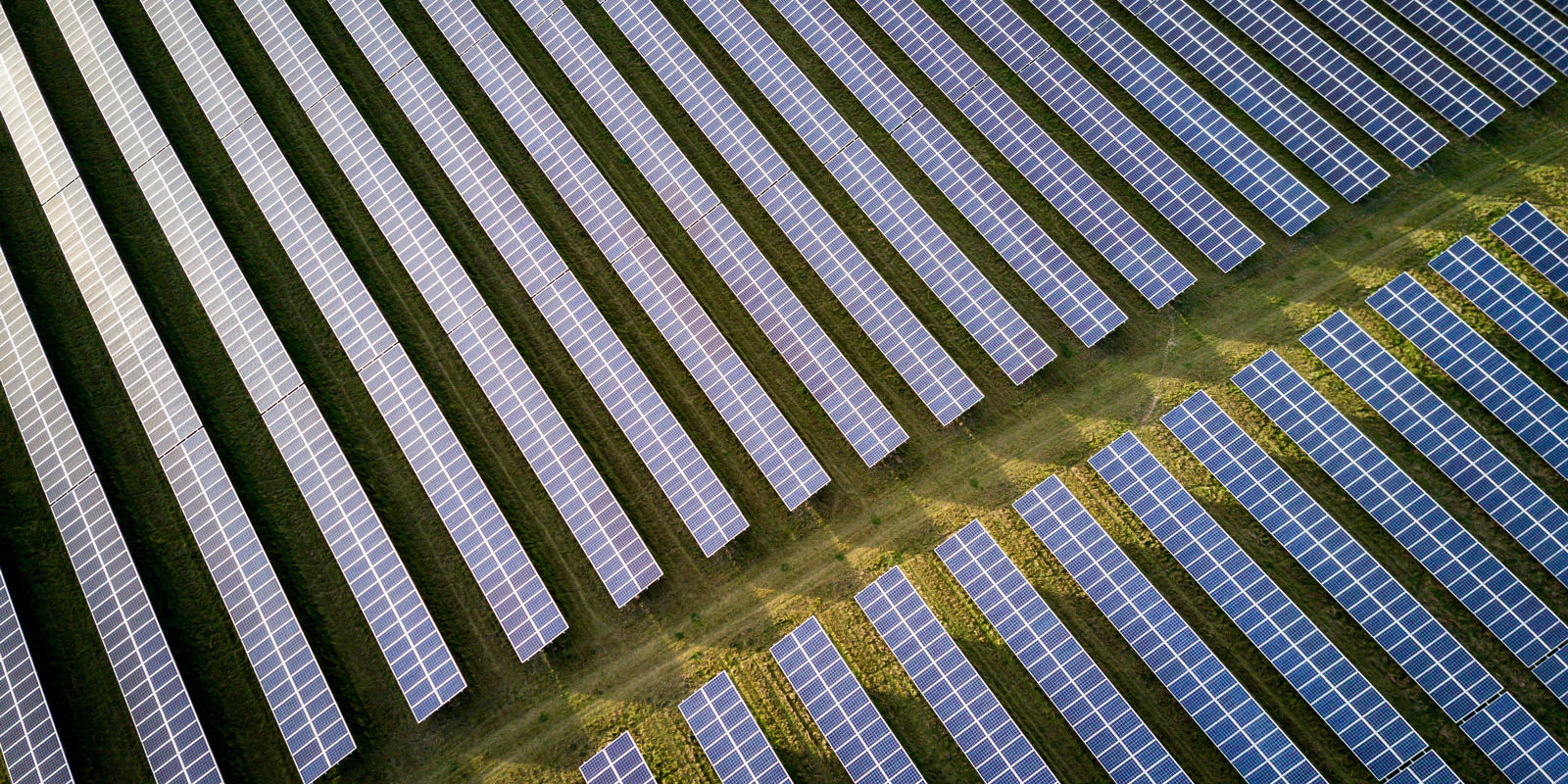
Powering up Wisconsin agriculture
In the week following Governor Evers’ Executive Order, ground was broken for the Two Creeks plant, one of the two large solar plants owned by Madison Gas and Electric and WEC Energy. Located a mile from the Point Beach Nuclear Power Plant, this 800-acre solar farm will, by itself, more than double existing solar capacity when completed next year, from 120 megawatts (MW, measured in AC or alternating current) to 270 MW.
That total will more than double again when the 300 MW Badger Hollow solar farm, located in Iowa County, becomes fully operational at the end of 2021. And other Wisconsin utilities, WPPI Energy and Dairyland Power, have signed power purchase agreements from 249 additional megawatts of solar from two projects, both of which are now seeking approval from the Public Service Commission and could also be built in 2020-2021.
Solar farms deliver far more value to the public and the planet than simply megawatt-hours of electricity produced and tons of carbon dioxide avoided. There are also the jobs that go into the construction of these arrays, the revenues that allow farmers to keep farming their land, revenue payments to local governments that host the projects, and the rich habitat for pollinators and wildlife that is created as the soil recharges. Harnessing solar energy for productive purposes has been and will continue to be integral to Wisconsin agriculture.
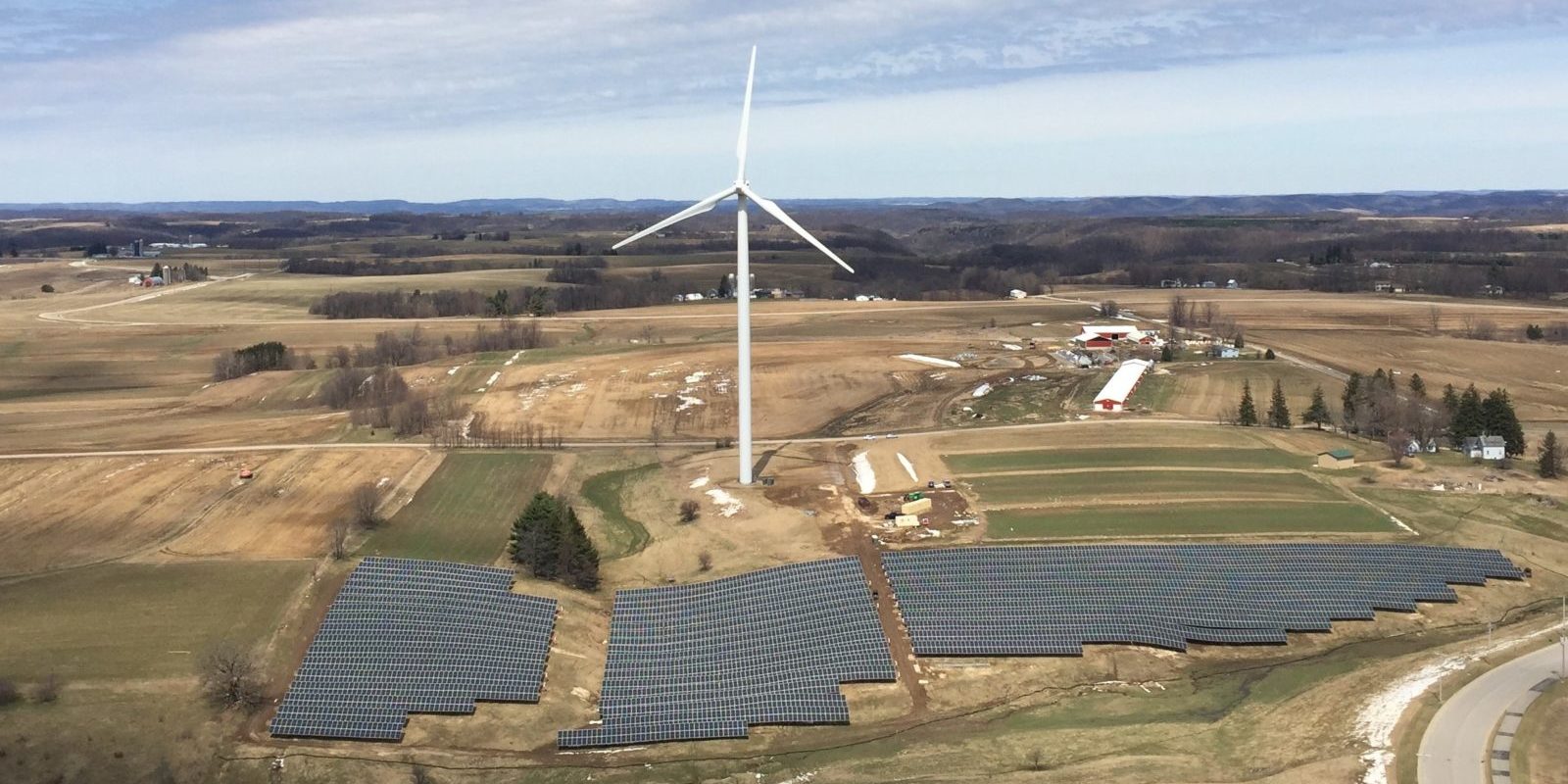
Meet the 100% renewable energy club
To put an exclamation mark on the last point, one of the most productive actors on the American agriculture scene—LaFarge-based Organic Valley Cooperative—financed the construction of two smaller solar farms in western Wisconsin. These two arrays—one in Arcadia and the other in Cashton—were energized last month and are now sending power into the grid.
That new increment of renewable electricity, when added to Organic Valley’s previous investments in solar and wind power, will enable the cooperative to offset 100% of its electricity use from zero-carbon, renewable sources. Organic Valley is the largest U.S. food brand to have accomplished that feat.
Organic Valley is the second Wisconsin enterprise to achieve a 100% renewable electricity goal. The first was La Crosse-based Gundersen Health System, which achieved that milestone five years ago through a combination of intensive efficiency measures and small-scale renewable power projects, usually off-site. In addition to reducing its energy overhead and passing the savings along to the people it serves, Gundersen wanted also to lead by example, demonstrating to the health care industry that sustainable energy is “healthy, socially responsible and economically beneficial.”
It is not unrealistic to expect that, in the next 10 years, hundreds of businesses and local governments will manage to achieve the same feat pioneered by Gundersen and Organic Valley.
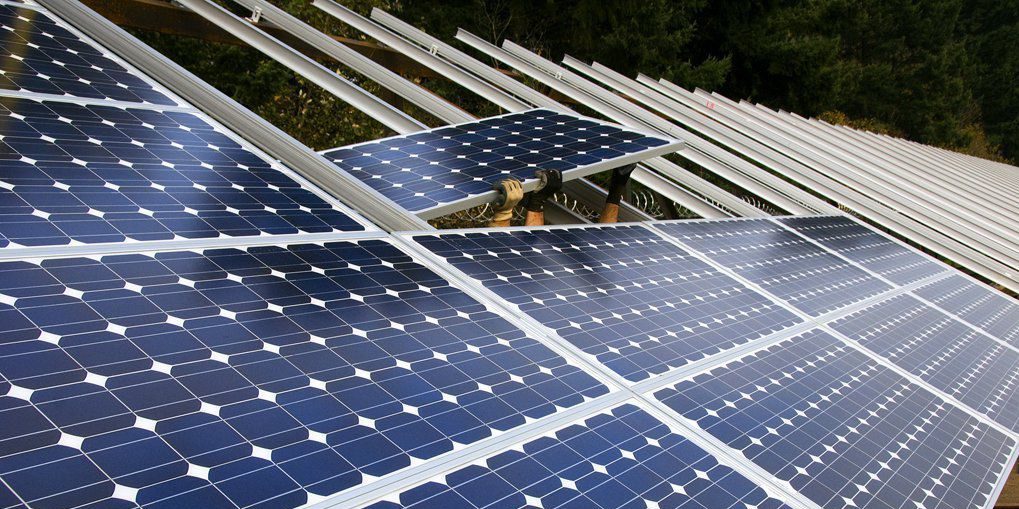
Connecting customers to solar power
When Gundersen pursued energy efficiency to reduce its energy overhead and generate carbon-free electricity as offsets, it had to settle on a path that effectively bypassed the electric providers serving their facilities. But some utilities are no longer content to stand on the sidelines while their customers sponsor new clean energy generation by their own initiative. Newer services such as shared solar and renewable energy sleeve tariffs enable self-selecting customers and utilities to partner on new clean power projects.
For example, Xcel Energy’s Solar*Connect Community program has been particularly successful in eliciting customer subscriptions to purchase electricity produced from new solar arrays in western Wisconsin. While there is an up-front cost to this service, the price of solar power is fixed, and may over time become less expensive than standard electricity, depending on the size and frequency of future rate increases.
It’s worth noting that this is not a required service in Wisconsin, and therefore many residents and businesses here do not have access to a utility-provided shared solar service. Expanding shared solar throughout the state would allow more residents and businesses to benefit from the clean energy evolution.
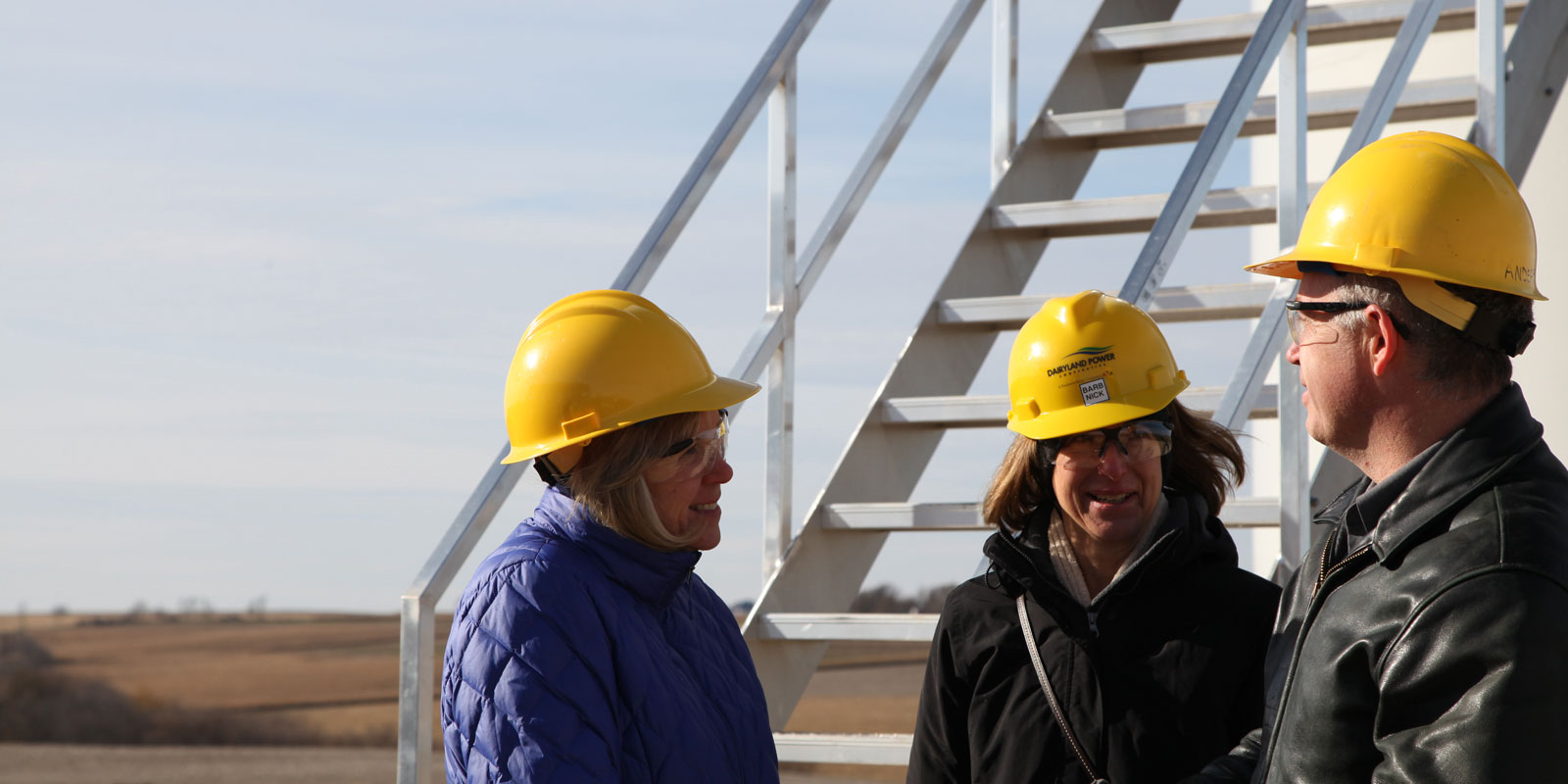
Wind power returning for duty
Back in 2006, when Wisconsin’s renewable energy standard was raised to its current level, wind power was poised to become the workhorse of the renewable electricity world. It did become so in several states, among them Texas and Iowa. But while wind power supplies 16% of Texas’ electricity and nearly 40% of Iowa’s power, Wisconsin’s rancorous siting and permitting climate has severely hobbled wind’s growth here since 2011. Right now, wind accounts for about 2.5% of electricity produced in the Badger State. Wisconsin utilities own, or buy power from, wind farms in other states which, if included, brings the total amount of wind being credited to Wisconsin customers to about 7% of the state’s electricity consumption.
Wind development activity is beginning to rebound, however, especially in the southwestern part of the state. But it will need to spread beyond the small pockets of the state where the current population of wind farms now operate. With capital costs going down and turbine productivity going up, wind development can occur cost-effectively over a wider swath of Wisconsin than what was considered suitable 10 years ago.
And why not include Lake Michigan among the areas that can host tomorrow’s wind farms? Engineering advances and improvements in foundation design make offshore wind power in waters deeper than 100 feet a feasible option. The ripple effects through the eastern Wisconsin economy would be substantial, especially for companies that manufacture cranes and marine construction vessels. Offshore wind can happen here with the right leadership.
But while the picture for wind power going forward remains uncertain, it’s all systems go for solar power. What is now an affordable resource for power providers is also an equally attractive option for electricity customers of all sizes, classes, and groupings, whether the solar array is dedicated to one home or business or to a school district or local government. Partnerships forming around solar energy are multiplying across the state and much of the nation.
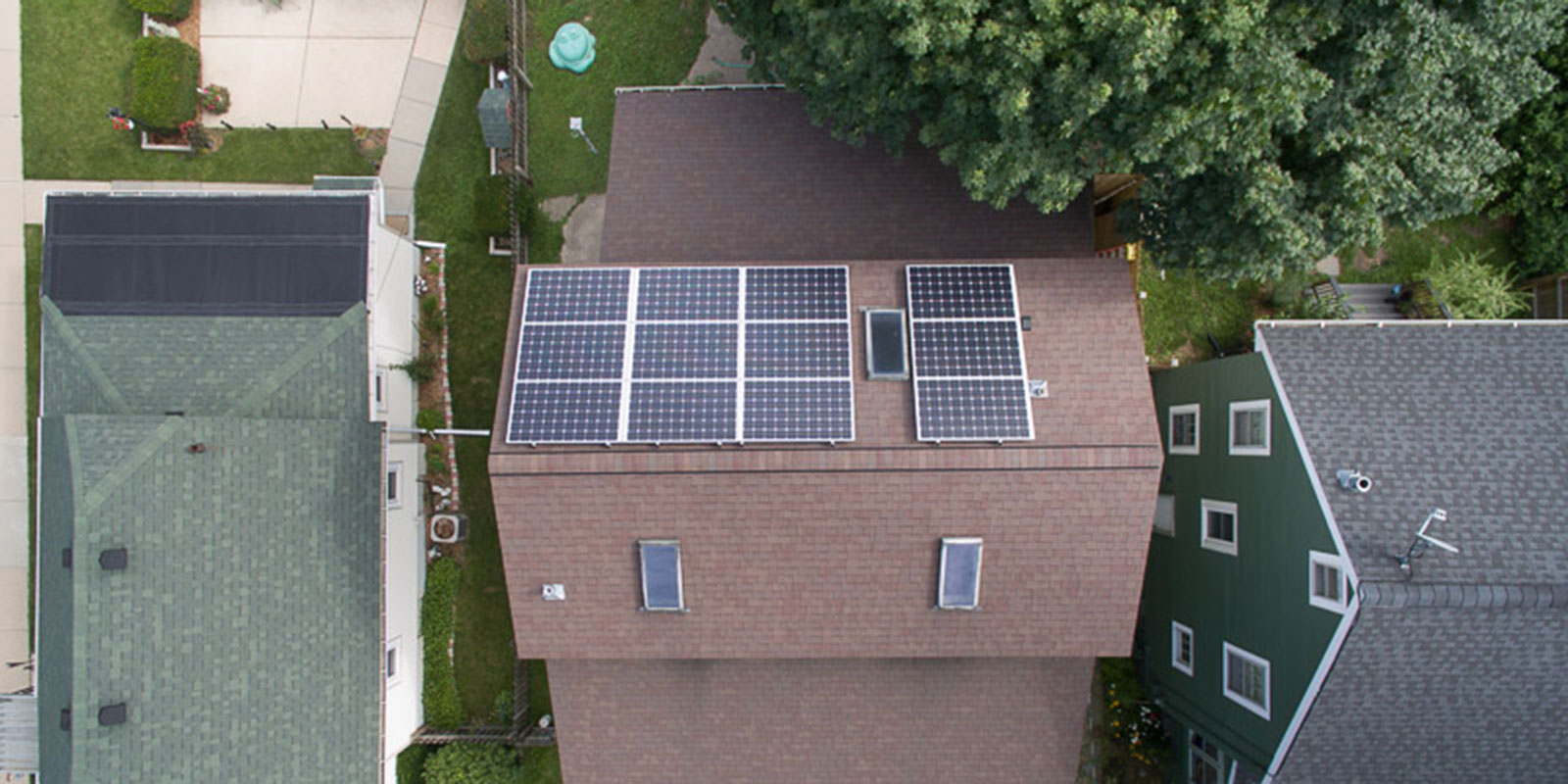
Customer-sited generation growing, but needs to be unleashed
From 2013 to 2018, customer-sited generation was the primary bright spot in Wisconsin’s renewable energy landscape. Customer-sited solar grew from 17 megawatts in 2013 to about 80 megawatts by year-end 2018, and the market continues to grow as the cost of installing solar power has declined. Initiatives like our Solar for Good and Faith & Solar programs have made solar power an affordable option for more than 40 nonprofits across Wisconsin, with 30 more working on projects this year.
But we know there are speed bumps, and it’s past time to fix them. The 20 kilowatt net metering threshold set by most of Wisconsin’s utilities often and unnecessarily limits the ability of customers, especially larger businesses and nonprofits, to supply themselves with renewable power. Generators that exceed the net metering threshold are penalized for exporting power to the grid.
This situation has especially been hard on Wisconsin’s biogas generators. After their initial contracts expire, biogas generators face the prospect of a 60% reduction in revenue flow. Many have already stopped generating electricity as a result, and are now flaring biogas instead.
With Wisconsin utilities now clearly moving towards building renewable power and retiring coal plants, it’s time to equalize the treatment of customer-sited renewable generators relative to large solar farms. If utilities need more daytime power capacity, they should credit distributed generators like solar and biodigesters at the same level that is accorded to their own renewable power plants. Our net metering rules need to be strengthened to capture more of the great potential and benefits that we know distributed generation brings to Wisconsin.
It’s also time to enable financing of clean energy systems, such as third-party leases and power purchase agreements, so that more low- and moderate-income Wisconsinites can take advantage of “pay as you go” solar energy financing options which are commonly available in more than half of the United States.
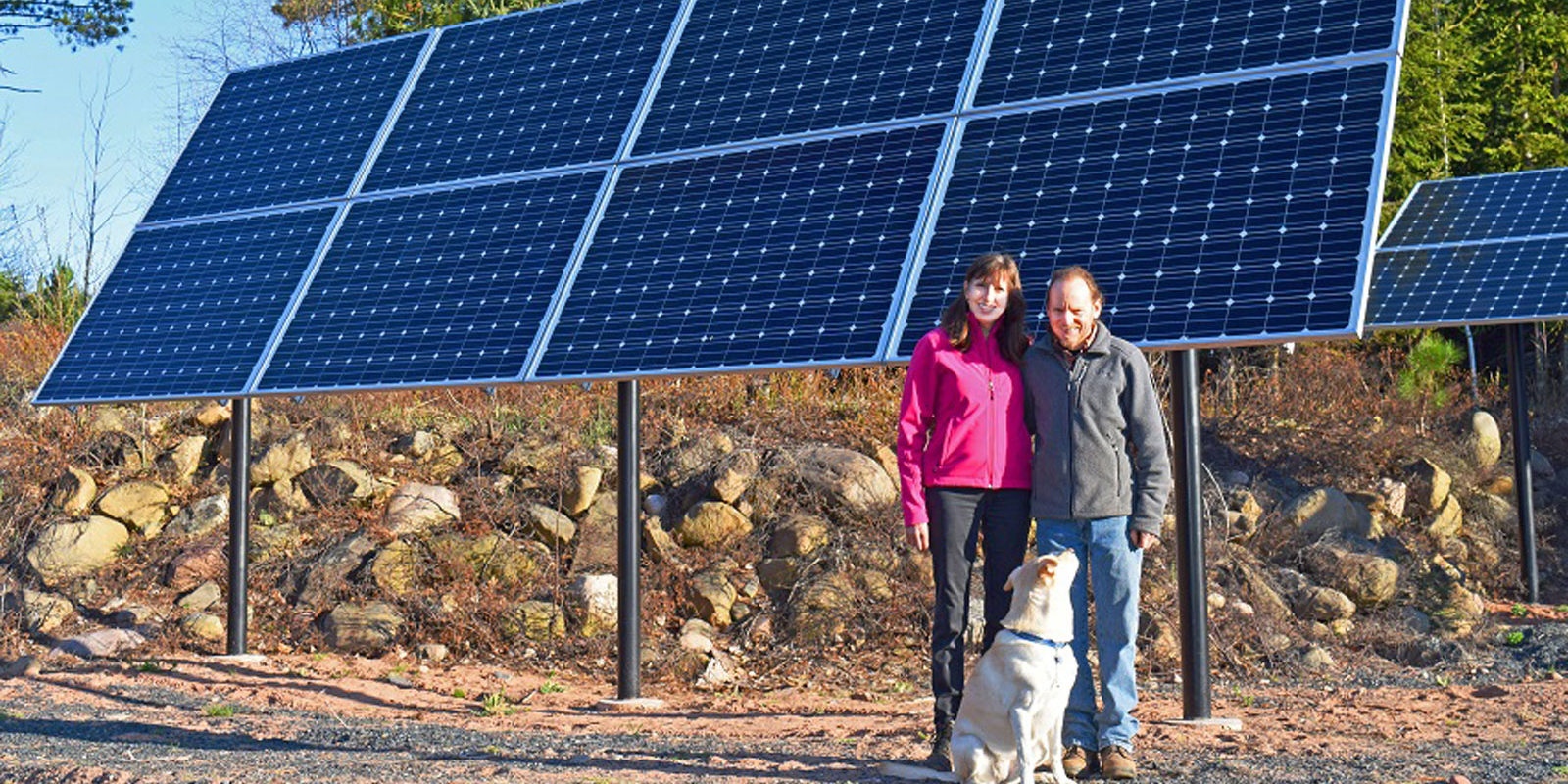
The value of partnerships
A particularly powerful example of solar partnerships can be found in the Ashland-Washburn-Bayfield area. Operating on a shoestring over its four-year history, Cheq Bay Renewables, an all-volunteer organization, has designed and developed several community-scale projects notable for their affordability and popularity. One of these is a solar group buy program, now in its second year, that has yielded nearly one megawatt of new capacity serving area homes, farms, and small businesses.
Supported initially by a $10,000 Solar in Your Community Challenge grant from U.S. Department of Energy (USDOE), the organization’s latest venture is set to deliver more than a dozen solar systems to schools, county-administered housing, wastewater treatment plants, and other public facilities in the Washburn-Bayfield area. Cheq Bay’s next project after that will put solar systems on three tribal buildings serving the Bad River Band of Lake Superior Tribe of Chippewa Indians. Half the funding for Bad River’s solar systems will come from U.S. DOE.
Through a combination of creativity, resourcefulness, and hard work, Cheq Bay Renewables has been the catalyst for the renewable energy transformation occurring in northern Wisconsin. Though the progress it has made thus far is nothing short of amazing, it wouldn’t be happening without all the partnerships that Cheq Bay has meticulously cultivated with local governments, federal and state agencies, electric providers, and sustainable energy professionals.
Partnerships like these are essential for getting the job done. And Executive Order 38 sets the stage for a new round of partnerships and collaboration to achieve the bold vision for Wisconsin’s clean energy future that Governor Evers and his Administration now embrace. From what’s happening on the ground, we know many initiatives are delivering results today, and these bright spots will be the foundation to creating a statewide clean energy success story.














